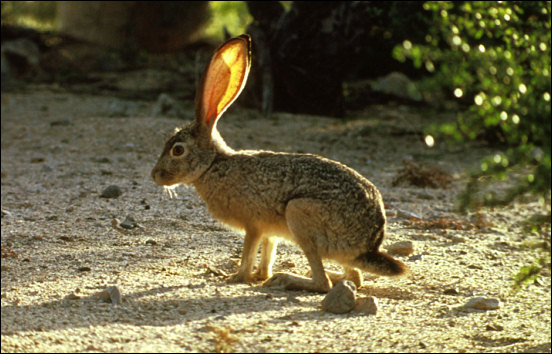

Some groups of animals are successful by coming in a vast array of body forms, while other groups seem to disdain variety. Look among the rodents, seemingly having little in common with each other except the remarkable, ever-growing front teeth. They are runners, climbers, jumpers, and swimmers, and vary from little bigger than a man's thumb to the size of a small deer; if you count extinct ones, to the size of a rhinoceros! Their teeth are specialized for everything from wood to seeds to soft-leaved plants to harsh, abrasive grasses. It's no wonder that the rodents form the largest of the mammalian taxonomic orders.
On the other hand, there are the rabbits and hares—the lagomorphs.
These seem to have struck early upon a body form that suited them and stuck with it.
Everyone can recognize any of the rabbits, and if numbers of individuals mean success,
the rabbits enjoy fame. After all, what are the mammals most often seen in our desert?
Certainly a good case can be made for our Desert Cottontail and our Black-tailed
Jackrabbit.

Listen to the Audio (mp3 format) as recorded by KTEP, Public Radio for the Southwest.
Contributor: Arthur H. Harris, Laboratory for Environmental Biology, Centennial Museum, University of Texas at El Paso.
Desert Diary is a joint production of the Centennial Museum and KTEP National Public Radio at the University of Texas at El Paso.

Black-tailed Jackrabbit (Lepus californicus). Photograph courtesy of the U.S. Fish and Wildlife Service.